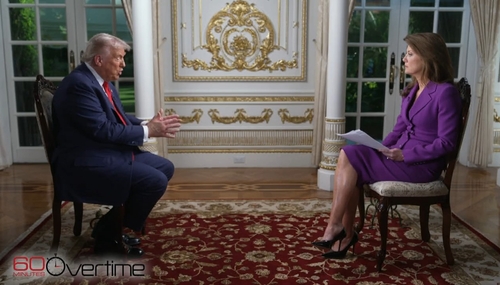It
was nearly three years ago that the U.S. Senate last passed a budget,
despite the need for a clear plan to tackle debt and spending issues.
The anniversary of that last budget is April 29, 2009. Since that time,
the media have repeated the liberal theme that proposals to cut or cap
spending are “draconian,” even when the cuts were only 4.6 percent of
the year’s budget deficit.
From
the editorial pages of The New York Times and The Washington Post, to
the broadcast networks news programs, the word “draconian” was a
favorite descriptor throughout Obama’s term. One columnist even called a
GOP proposal a “betrayal of the powerless.” “Draconian” has been used
to describe Rep. Paul Ryan, R-Wis., his budget proposals, the impact of
presidential candidates’ proposals, and in discussions of compromise
spending bills.
NBC’s
David Gregory called Ryan “more draconian” than his “fellow
Republicans” in 2011. President Obama echoed the same to attack Ryan’s
2013 budget proposal in an April 4, 2012, speech to the press.
“Proponents
of this budget will tell us we have to make all these draconian cuts
because our deficit is so large; this is an existential crisis, we have
to think about future generations, so on and so on,” Obama said before
pushing the old liberal theme that tax cuts carry a “cost.” “And that
argument might have a shred of credibility were it not for their
proposal to also spend $4.6 trillion over the next decade on lower tax
rates.”
Obama
took another dig at the Ryan plan calling it “thinly veiled social
darwinism.” Fine talk coming from a president whose latest $3.6 trillion budget proposal was unanimously defeated in the House of Representatives.
A
year earlier, Obama’s budget proposal (which included roughly $1.5
trillion in deficit spending) failed to garner a single vote from the
Democrat-controlled Senate. But it did get support from the liberal
media. On Feb. 15, 2011, a Times editorial about Obama’s budget called
the $3.7 trillion monstrosity “encouraging” and claimed “It makes a
number of tough choices to cut the deficit by a projected $1.1 trillion
over 10 years...” The Times also berated GOP alternatives saying, “The
Republican cuts would eviscerate vital government functions while not
having any lasting impact on the deficit.”
Liberal Washington Post columnist Ezra Klein attacked Ryan’s 2013 budget on April 3, 2012. He condemned it and Ryan saying: “The
cuts to education, to food stamps, to transportation infrastructure and
to pretty much everything else besides defense are draconian.”
He cited the Center for Budget and Policy Priorities founder Bob
Greenstein who claimed it would “decimate state budgets.” Klein
dramatically claimed that “It is hard to see his budget as anything less
than a betrayal of the powerless.”
It
hasn’t mattered what spending cuts were proposed, they’ve been
lambasted by the left-wing in politics and the media. And forget about a
balanced budget amendment. That was denounced as “folly” and
“draconian” by the Times editorial board, and “a bad idea” by The
Washington Post.
In
2011, Rep. Norman Dicks, D-Wa., told NBC viewers that $60 billion in
spending cuts were: “a meat ax approach on a - on top of a meat ax
approach.” While in a separate story the same day, NBC anchor Lester
Holt called them “pretty drastic cuts.”
In
The New York Times opinion section, the same bill was labeled a
“draconian budget” full of “cuts that would prove devastating to the
poor and working class.”
But
compared to the size of our national debt, or even the federal budget
deficit (the shortfall for the current year), $60 billion is a drop in a
bucket. The national debt stands just shy of $15.7 trillion as of April
26, 2012. The Federal budget deficit was at $1.3 trillion, so that $60
billion cut is a mere 4.6 percent of that massive figure.
According
to The Heritage Foundation, $4.1 trillion of that debt has been added
between April 29, 2009 (the last time the Senate passed a budget) and
Jan. 20, 2012 (1,000 days after the last budget passed).
When Cuts Aren’t Really Cuts
The
U.S. Senate has failed to do its duty by using continuing resolutions
to keep the government running, instead of passing a budget. The
Heritage Foundation called it “egregious dereliction of duty on Senate Majority Leader Harry Reid’s (D-NV) watch.”
“The
budget process forces Congress to set priorities to protect the
people’s money and put it to its appropriate use. Instead, the
Democrat-controlled Senate has abdicated its responsibility. The result?
The deficit is soaring, causing a looming tax burden and injecting
uncertainty into the economy …” Mike Brownfield wrote for Heritage’s
Foundry blog.
Certainly,
the Senate needs to do its job and pass a real budget that addresses
the fiscal trouble the country is in. The fact is that the longer the
government takes to address mounting debt and out of control spending,
the more severe the solutions will have to be.
The
problem with liberal media coverage of the budget issue is that viewers
and readers rarely get a sense of the big picture. In August of 2011,
when the media reacted to the debt ceiling deal they made it sound like
Congress took a “machete” to the budget. NBC fretted that those spending
cuts could “harm the economy.”
The
truth was, according to Chris Edwards of Cato, that the deal “doesn’t
cut federal spending at all.” The cuts were an illusion, because of the
use of baseline budgeting.
Baseline budgeting is budgeting that assumes growth of spending, so
cuts are often cuts from the projected growth -- not actual spending
cuts.
At
that time the Business and Media Institute analyzed coverage of the
debt ceiling deal on broadcast new programs. Only 2 of the 43
stories/interviews/news briefs admitted that the debt would still climb
-- by $12 trillion in 10 years under the plan, according to Cato’s
Edwards.
On
Aug. 2, 2011, ABC “World News” aired one of the only stories that
pointed that out. That night Diane Sawyer asked: “How much did that
compromise bill really shrink the country’s overspending?”
"World
News" aired a chart on screen that showed the projected national debt
to double in 10 years - from 2011-2021 ($14.29 trillion to $28.8
trillion). The debt compromise signed into law by Obama would only lower
the 2021 projection by $2.5 trillion over those 10 years to $26.3
trillion. That's still an 81 percent increase.
After
seeing that “World News” story, liberal comedian and news critic Jon
Stewart summarized the debt ceiling fight in terms only he could on Aug.
3 shouting, “That's what this whole thing was about? This whole
brouhaha, according to Diane Sawyer's parallelogram of disappointment
managed to remove one paper-thin chocolate shaving from our Dairy Queen
gut-buster sundae of debt?”
Media Label Spending Cuts ‘Draconian’ and ‘Folly,’ As Debt Grows by Over $4 Trillion
April 27th, 2012 11:45 AM
Font Size





